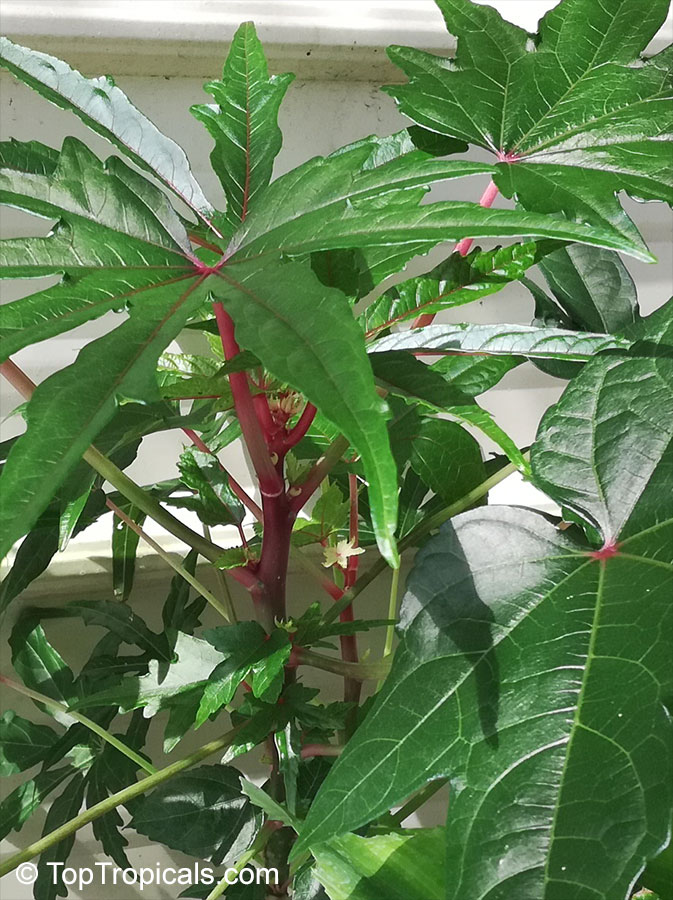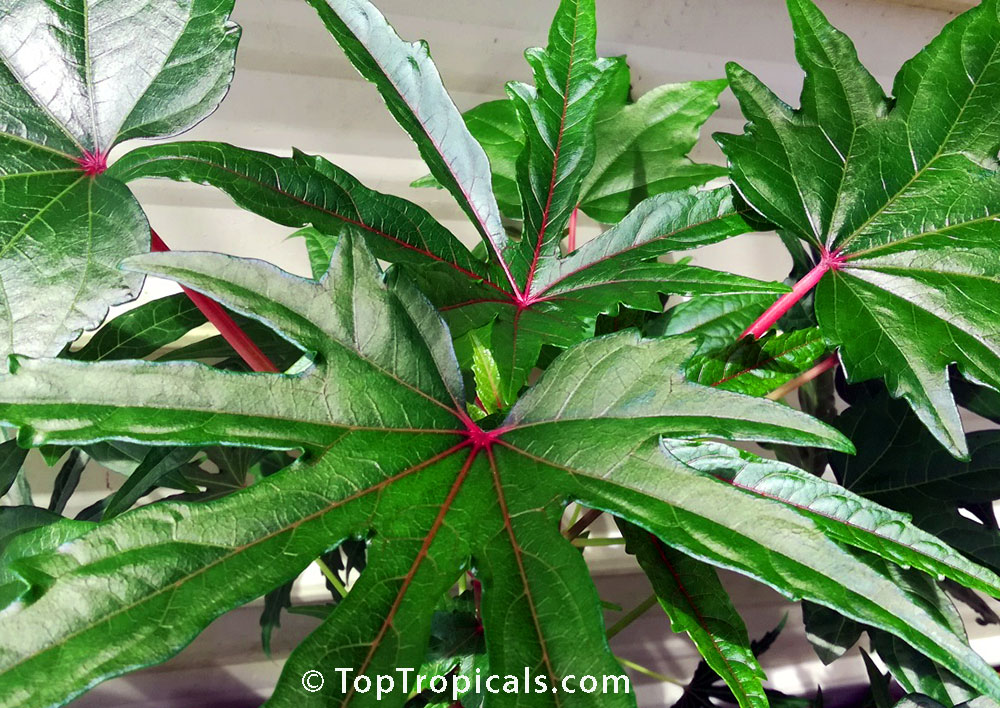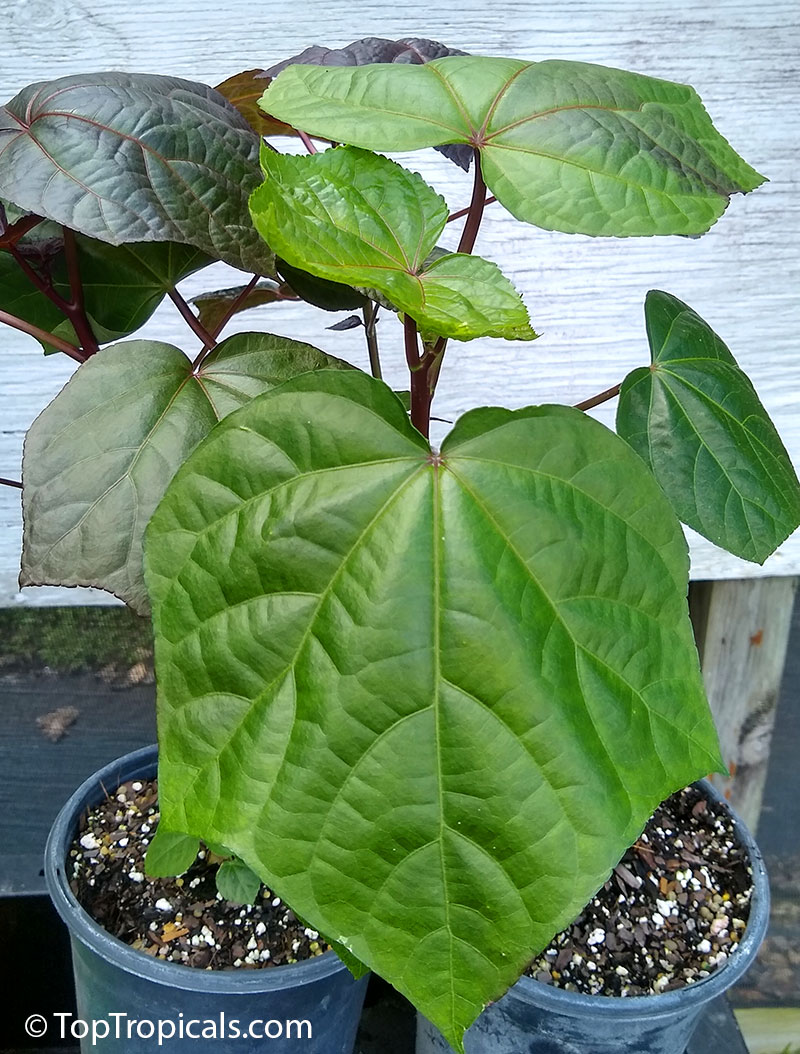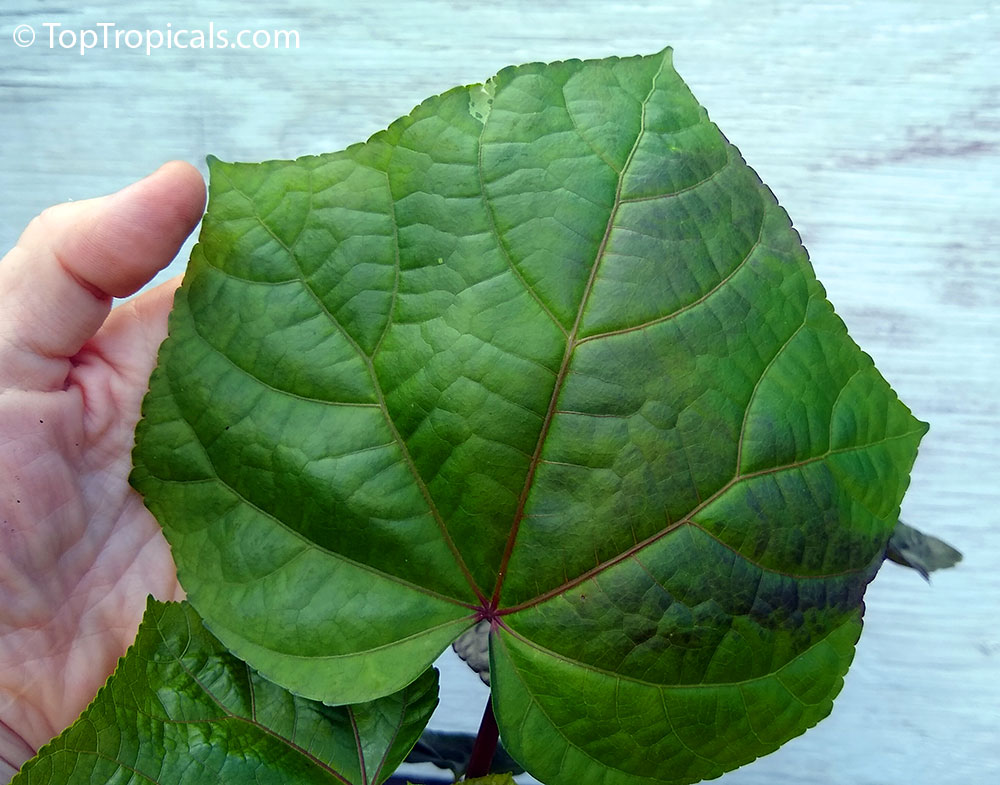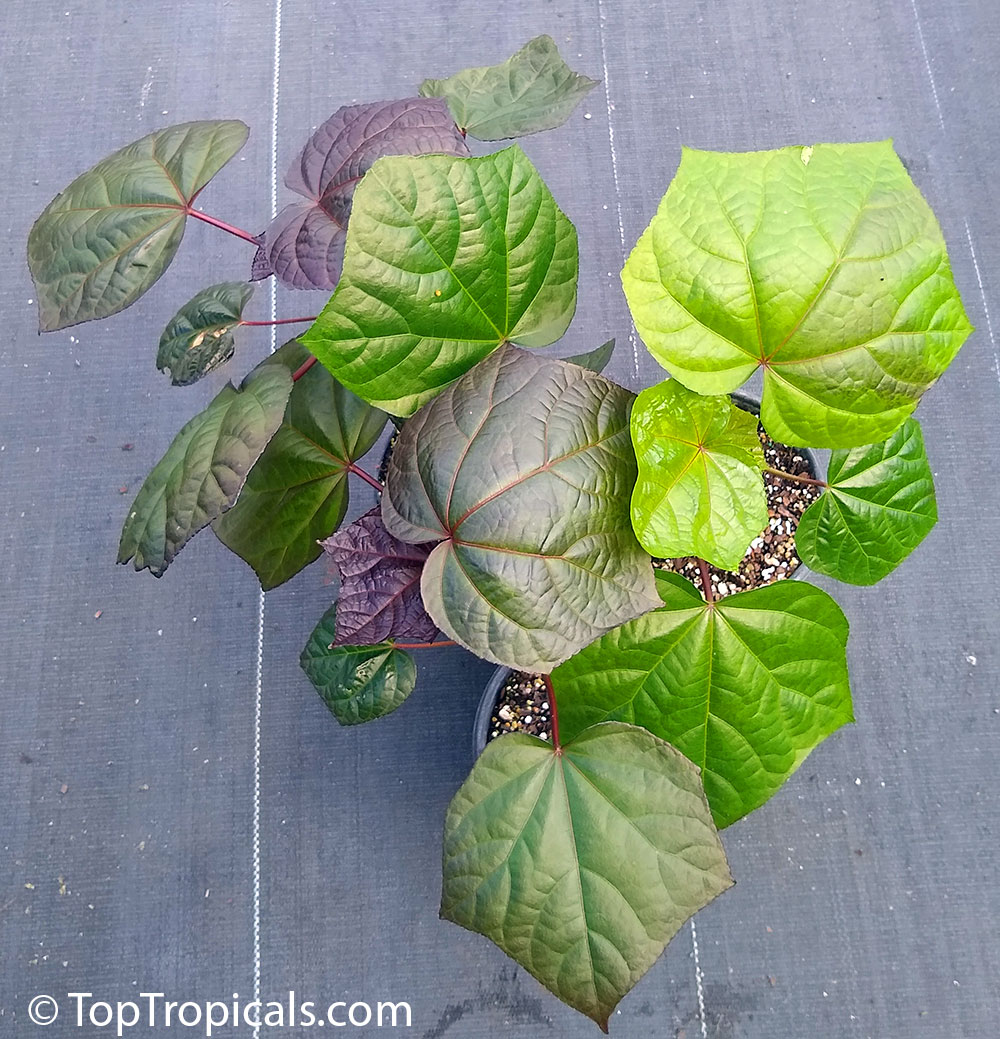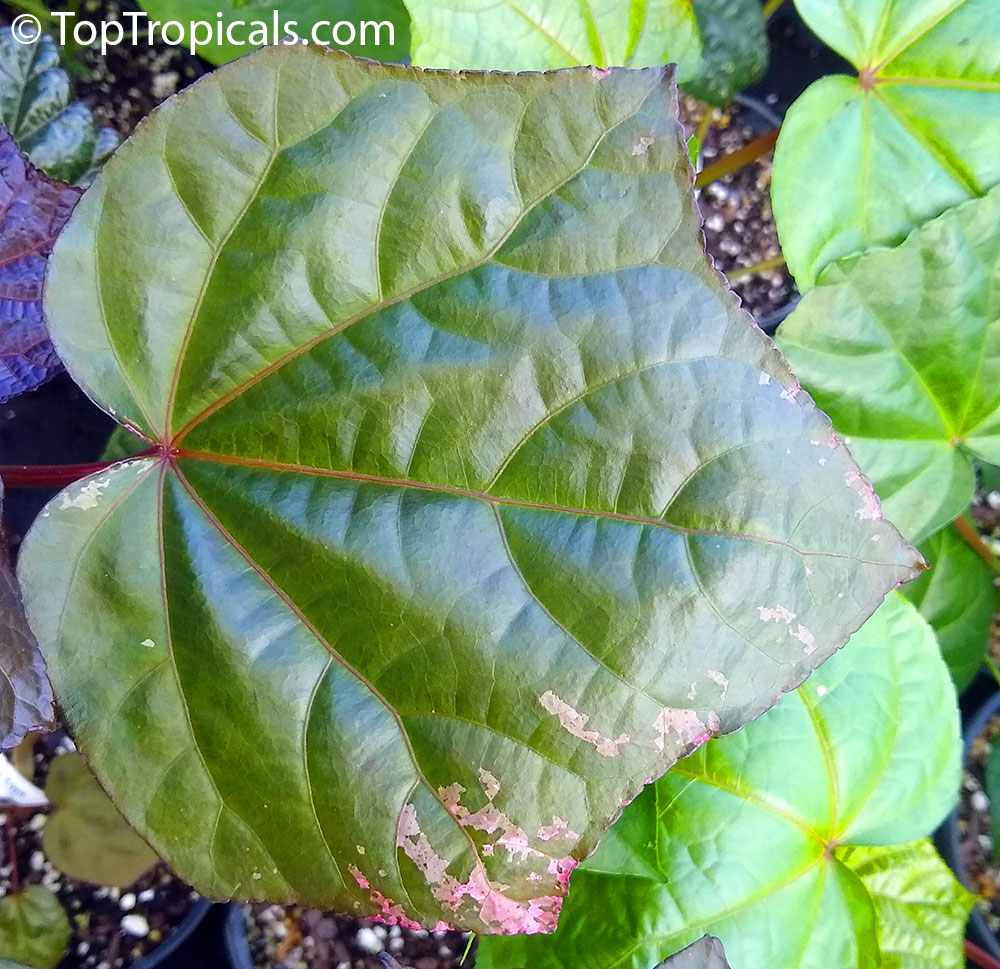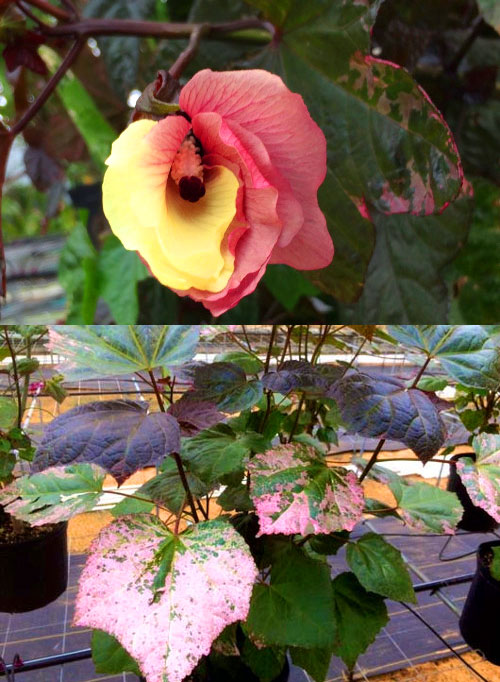TROPICAL PLANT ENCYCLOPEDIA
Abelmoschus manihot
South Sea Salad Tree, Bele tree, Sunset Muskmallow, Sunset Hibiscus, Hibiscus ManihotFamily: Malvaceae
Origin: Southeast Asia










Its palmate leaves are highly dissected with five to nine deep lobes. The largest, widest leaves form at the base of the plant, where there may be some small side branches. The blooms (4-5" in diameter) are pale yellow with a dark maroon to purple center eye, and emerge from the terminal end of a central flowering stalk.It is easily propagated from cuttings, easy to cultivate, relatively disease-resistant and even is considered to be of medicinal value. It is widely planted either along borders of gardens or as an intercrop throughout many traditional gardens in the tropics. A nice flowering addition to the vegetable garden.
Similar plants:
Link to this plant:
https://toptropicals.com/catalog/uid/abelmoschus_manihot.htm
Auntie Lilli's South Sea Salad Bele Tree, known by the Latin name of Abelmoschus manihot, isn't a tree at all. It is in the botanical family Malvaceae, same as okra and the woody-stemmed hibiscus. It may have the growth of a shrubby tree due to its tropical nature, as it is native to tropical portions of Asia and also northern Queensland and can grow up to 9 feet tall when given the right conditions.
The South Sea Salad Tree has been a traditional green vegetable in Fiji for some time. It is grown as an tender ornamental perennial in Hardiness Zones 8-10. It does have a beautiful flower, but lesser known is the fact that both its flowers and leaves are delicious as well as nutritious! The laves are high in Vitamins A and C and Iron, and have 12% protein by dry weight. Leaves and flowers can be eaten raw in salads, and the leaves can also be lightly cooked similarly to spinach. Delicious, nutritious and a beautiful flower - talk about a perfect edible plant for tropical/subtropical landscapes and temperate annual gardens and patios.
Recommended Fertilizer: SUNSHINE Megaflor - Bloom Nutrition Booster
The South Sea Salad Tree has been a traditional green vegetable in Fiji for some time. It is grown as an tender ornamental perennial in Hardiness Zones 8-10. It does have a beautiful flower, but lesser known is the fact that both its flowers and leaves are delicious as well as nutritious! The laves are high in Vitamins A and C and Iron, and have 12% protein by dry weight. Leaves and flowers can be eaten raw in salads, and the leaves can also be lightly cooked similarly to spinach. Delicious, nutritious and a beautiful flower - talk about a perfect edible plant for tropical/subtropical landscapes and temperate annual gardens and patios.
Recommended Fertilizer: SUNSHINE Megaflor - Bloom Nutrition Booster
